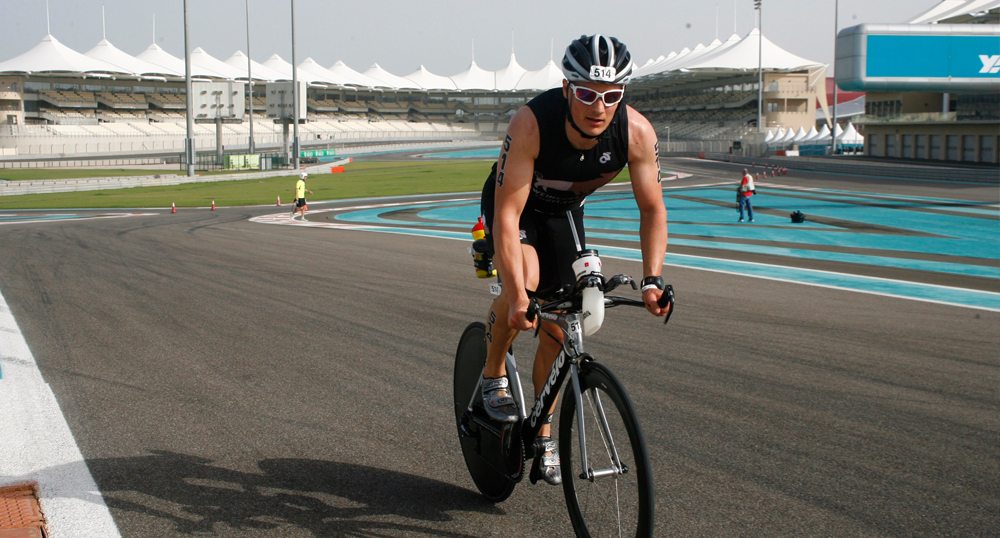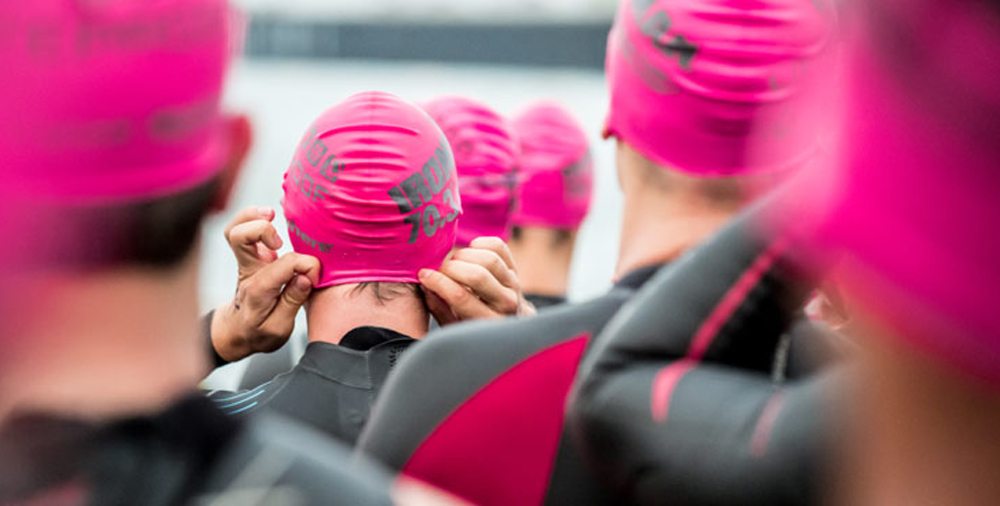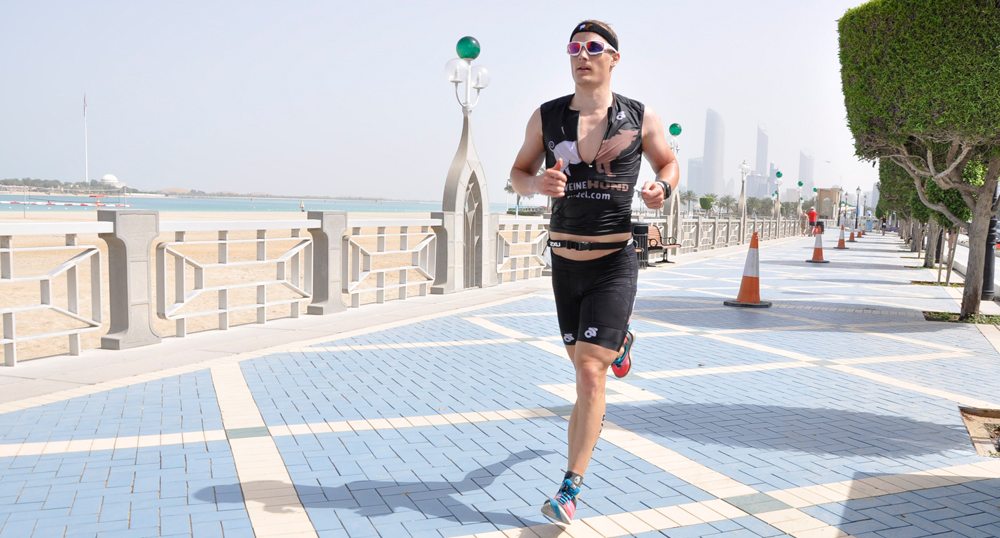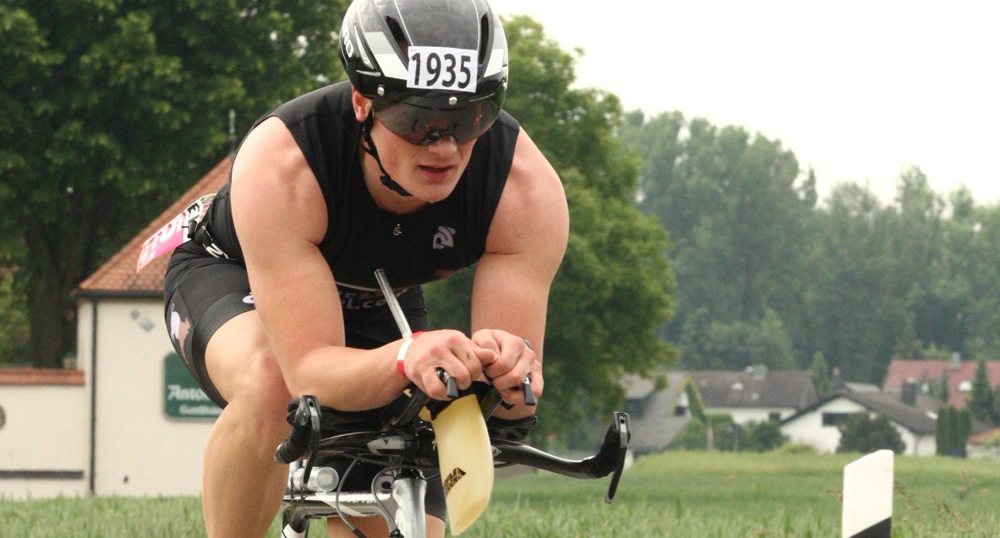A sport and fitness fanatic, Christian, one of our amazingly talented Account Managers, based out of our German Office, has set himself the goal of completing an Ironman this upcoming season. There are many challenges that lie ahead for Christian, which surprisingly are not to do with his training scheme or diet regime, but more to do with finding the right lifestyle balance. Christian might be a rookie to the Ironman challenge but he has trained, competed and learnt a lot about triathlon over the years. This knowledge doesn’t only help him in the build up to his Ironman, but also helps on a daily basis at Brandwave, here he explains all…
A lot of people who get a glimpse into my daily lifestyle or sport history would think that my world only revolves around sports. During the day, I work at Brandwave; developing market research projects or analyzing brand guidelines for global sport brands and at night and in the mornings, I train with friends. To a normal athlete, this sounds like a pretty standard daily routine; but how do you actually train for an Ironman, integrating a serious training schedule into your daily life? How does that work? I’ll try to explain…

As soon as I got my hands on one of the rare tickets for the legendary Challenge Roth (Ironman), I immediately began my training with full motivation and enthusiasm. I start my day at 6am with a training session and then straight after work, even after a full day at the photo studio, creating images for a new global print campaign, I still drag myself into the swimming pool with crowded lanes and try to push myself to beat my current speeds. This is no problem at all, because I have the end goal in my mind at all times. However, already after two months, I am slightly disillusioned. Even though I do not have any family responsibilities to keep me from my extensive training, I am already noticing that my social life, my energy level at work and my physical state have become strained and I am constantly pushing to keep my momentum up.
Having a serious training plan with scheduled and targeted sessions to conquer the Ironman has little to do with how much and the way I undertook sport in the past. Therefore, I began to buy triathlon magazines, research forums and read blogs to gain more knowledge about training routines, diets and recuperation after my intense sessions. Although triathlon is considered a marginal sport, the number of advertisements from triathlon brands and the way in which they would communicate their product launches, completely overwhelmed me. This got me to thinking and I decided to research into the market more…

As a result of my research I have found some interesting figures which I retrieved from various scientific studies. The socio-demographic figures has shown that the average triathlete is male, around 40 years of age, with an income of between $75,000 and $125,000. From this income, the average spend on their hobby of triathlon is around $3,000 per year. When we add the different behavioural variables of these triathletes, we get an even better understanding of this narrow target group.
If a person dedicates nine to twelve hours a week to training, joins between two and five races per year and has actively been involved in triathlon for five to seven years, they can be considered a “dedicated” triathlete and will have gained a certain level of knowledge and a “triathlete’s mindset”, that gives sports marketers an opportunity to create very targeted communications, inline with this identifiable persona.
When we only consider the Ironman athletes group the figures shown in the above paragraph become even more extreme. This is because Ironman training consists of more than twelve hours per week commitment, involves an average of five races per year (with different distances) and most Ironman athletes compete for an average of nine years. This group consists mainly of males (an average of four out five participants are men), but I have found that the bike industry (with product lines solely for women) is showing a gradual increase in female participation and hope that this continues long into the future.
From all the facts and figures shown we can see that triathletes, in particular Ironman participants, are a very interesting target group. However, in this market there is still a lack of effective ad campaigns that grasp the emotional side of the event and that speak out to new participants to motivate them to join. In the last eight years there has been a series of research studies released about this marketing gap. The results have shown that one of the main motivations for participating in a triathlon has been to set a new goal or a personal challenge to be part of such an event. Furthermore, these results show that the social aspect of the triathlon and the relationships made within the sport clubs (of which around 72% of the triathletes are members) plays a crucial role.

Aesthetics, health and well-being are other motivations. These results should be in the forefront of new concepts when creating new products and services for this sport. This focus would also enable the creation of a brand image, communicated through the right tone of voice and corporate identity in order to give a clear image that triathletes can identify with. This would increase the athlete’s desire to wear a specific brand, because the values and identity of this brand image is aligned with the self image the triathlete is striving for.
All the information I gathered throughout my research, all my training experience I have made in the past and my first impressions of my Ironman training started to make me think about my own reasons for joining the community. How do I motivate myself? What are my goals? Do I feel I can relate to the brands and do I feel understood in the communication they send? All of these questions will be extremely important and will weigh even heavier as I start to financially invest, compromise and commit myself more to this project.

Personally, I find that those involved in the triathlon business can capture and understand the image and identity of triathlon as a sport and as a community well. They have been able to create and target their product launches, POS concepts and their branding to the legendary Ironman and the overarching goal of a triathlete. Yet I am personally still missing the compassion towards the daily hurdles and struggles faced, when actually participating in this sort of training. Of course, every individual athlete’s schedule differs, but the biggest overlap will definitely come from time management, injuries, recuperation and their personalized training schedule. Honesty and understanding in their communication towards their target groups should be highlighted, as a glimpse into the average finishing times makes it clear that the majority of triathletes are not performance athletes who, in general, utilize all their spare time and disposable income to focus on their triathlon and/or draw their self-image out of an Ironman.
The Ironman event is for those athletes who simply want to make a dream come true and they should be supported on their journey; by brands, associations and clubs. Effective communication of the sector and what is involved in undertaking an Ironman is a great place to start with this support, and this is definitely a campaign that I would love to work on in the future…because now, at least I know and understand this crazy target market. Because I am the target market.
References
Case, R., & Branch, J. D. (2001). Event marketing: an examination of selected demo-graphic and psychographic data of participants competing in the world’s foremost off-road triathlon event. International Sports Journal, 5(1), 118–127.
Chang, M., & Johnson, L. W. (1995). Segmenting the triathlon association membership market: An Australian example. Sport Marketing Quarterly, 4(4), 25–28.
Clingman, J. M., & Hilliard, D. V. (1987). Some personality characteristics of the super-ad-herer: Following those who go beyond fitness. Journal of Sport Behaviour, 10(3), 123–136.
Devine, A., Bolan, P., & Devine, F. (2010). Online destination marketing: Maximising the tourism potential of a sports event. International Journal of Sport Management and Marketing, 7(1/2), 58. doi:10.1504/IJSMM.2010.029712
Harada, M., Onishi, T., Koijima, Y., & Ishiii, J. (2010). Motivation and profile of participants in the new endurance sports: the triathlon.: Paper presented at the 18th EASM Conference, Prague, Czech Republic, 15-18 September. Retrieved from https://easm.net/down-load/2010/664c42332401065ab7979aa9ae7bd2a2.pdf
International Triathlon Union. (2014). Global triathlon participation. Retrieved from https://triathlonquebec.objectif226.ca/wp-content/uploads/2012/03/ITU-Global-Triathon-Participation-Survey-NF.pdf
Martin, A. & Pancoska, P. (2010). Organisation intervention factors in increasing and sus-training participation in physical activity: a case of triathlon. Retrieved from https://www.easm.net/download/2010/b47503dbf151b5a5ce9add165ee70ae9.pdf
Matsui, K. & Harada, M. (2011). A study of the lifestyle of new endurance sports participants – Focus on triathlon participants.: Paper presented at the 19th Conference of the European Association for Sport Management, Emilio Butragueño, Madrid, 12 March. Retrieved from https://www.easm.net/down-
MultiSport Research (2015, July). USA and UK: ‘A tale of two countries’: Part of the presentation “State of Triathlon in Europe, the UK and the World”. Triathlon Business International. The 2nd Global Triathlon Business Conference, Roth, Germany. Retrieved from https://www.triathlonbusinessintl.com/assets/files/Panel-State%20of%20Tri-athlon%20in%20Europe%20UK%20and%20the%20World.pdf
Myburgh, E. (2014a). Segmentation by age of triathletes participating in Ironman South Africa. African Journal of Hospitality, Tourism and Leisure, 3(2), 1010–1039.
Lamont, M., Kennelly, M., & Moyle, B. (2014). Costs and Perseverance in Serious Leisure Careers. Leisure Sciences, 36(2), 144–160. doi:10.1080/01490400.2013.857623
Liddell, T. M. (2013). Exploring the Motives, Experiences, and Transformations of Non-Professional IRONMAN Athletes (Doctor of Philosophy). Arizona State University.
Smith, A. (2010). A qualitative analysis of motivation of elite female triathletes (Dissertation). San Jose State University, Washington D.C.
spomedis GmbH (2015, July). Status of Triathlon in Germany: Part of the presentation “State of Triathlon in Europe, the UK and the World”. Triathlon Business International. The 2nd Global Triathlon Business Conference, Roth, Germany. Retrieved from https://www.triathlonbusinessintl.com/assets/files/Panel-State%
The Active Network Inc. & Triathlon America. (2012). Active Network and Triathlon America Reveal Key Findings on the Triathlon Community. Retrieved from https://www.active-network.com/news-and-events/active-press-releases/2012/active-network-and-triathlon-america-reveal-key-findings-on-the-triathlon-community
Tribe Group. (2009). Mind of a Triathlete. Retrieved from
https://www.teamusa.org/usa-triathlon/about/multisport/demographics
Triathlon Industry Association. (2012). UK Triathlete Survey. Retrieved from https://www.tri-athlonindustryassociation.org/triathlon-research/
(2014). Long hot summer inspires surge in Triathlon growth. Retrieved from https://www.tri-athlonindustryassociation.org/wp-content/uploads/2015/12/140319_TIA-interim-survey-results-2014.pdf
Triathlon Business International. (2015). Breaking down the U.S. triathlon marketplace. Retrieved from https://www.triathlonbusinessintl.com/market-research-survey.html
Reese, S. (2008). An examination of direct spending patterns and economic impact figures associated with the 2007 XTERRA World Championship. Journal Virginia association for health, physical education, recreation and dance, 29(4), 1–40.
Wicker, P., Prinz, J., & Weimar, D. (2013). Big spenders in a booming sport: Consumption capital as a key driver of triathletes’ sport-related expenditure. Managing Leisure, 18(4), 286–299. doi:10.1080/13606719.2013.809190


